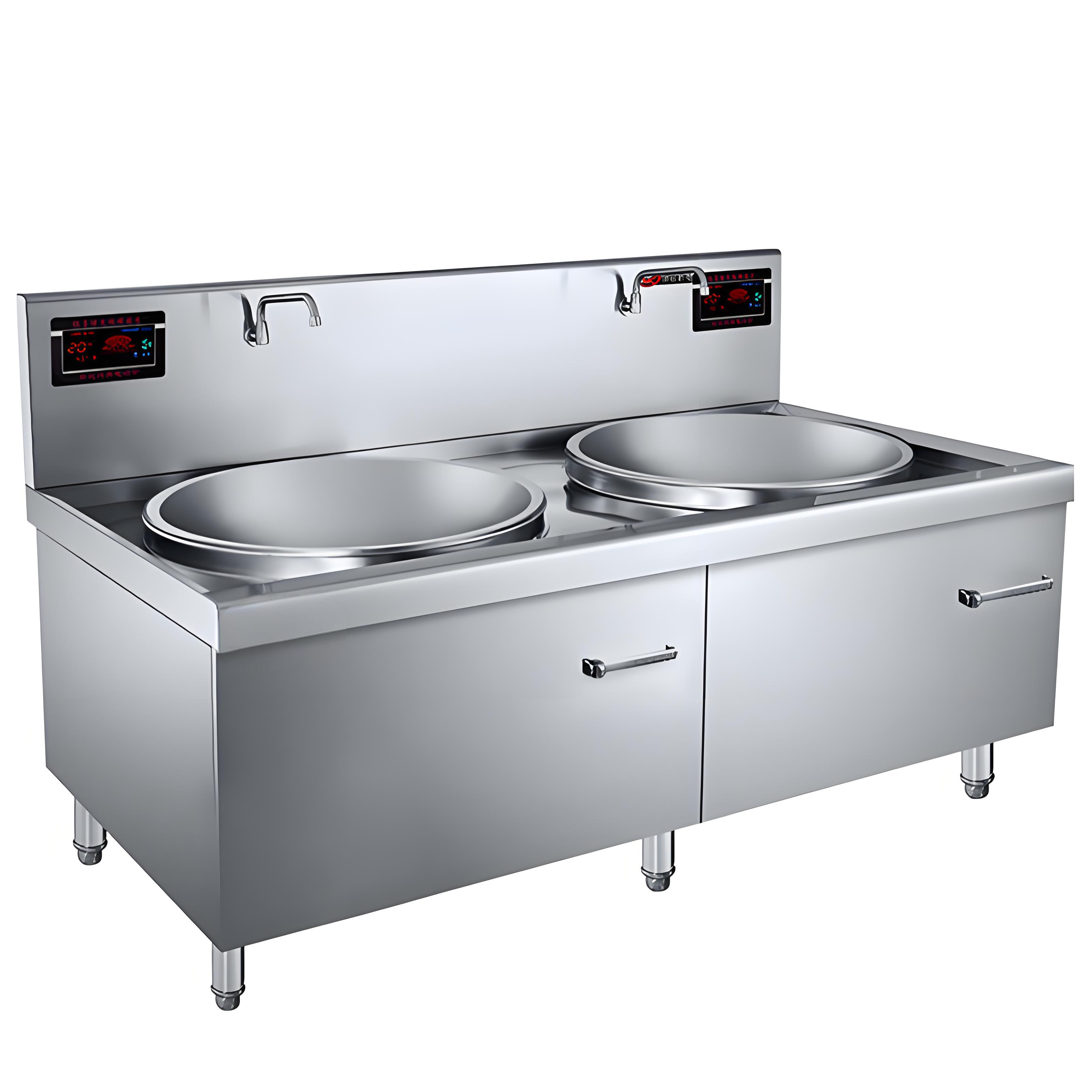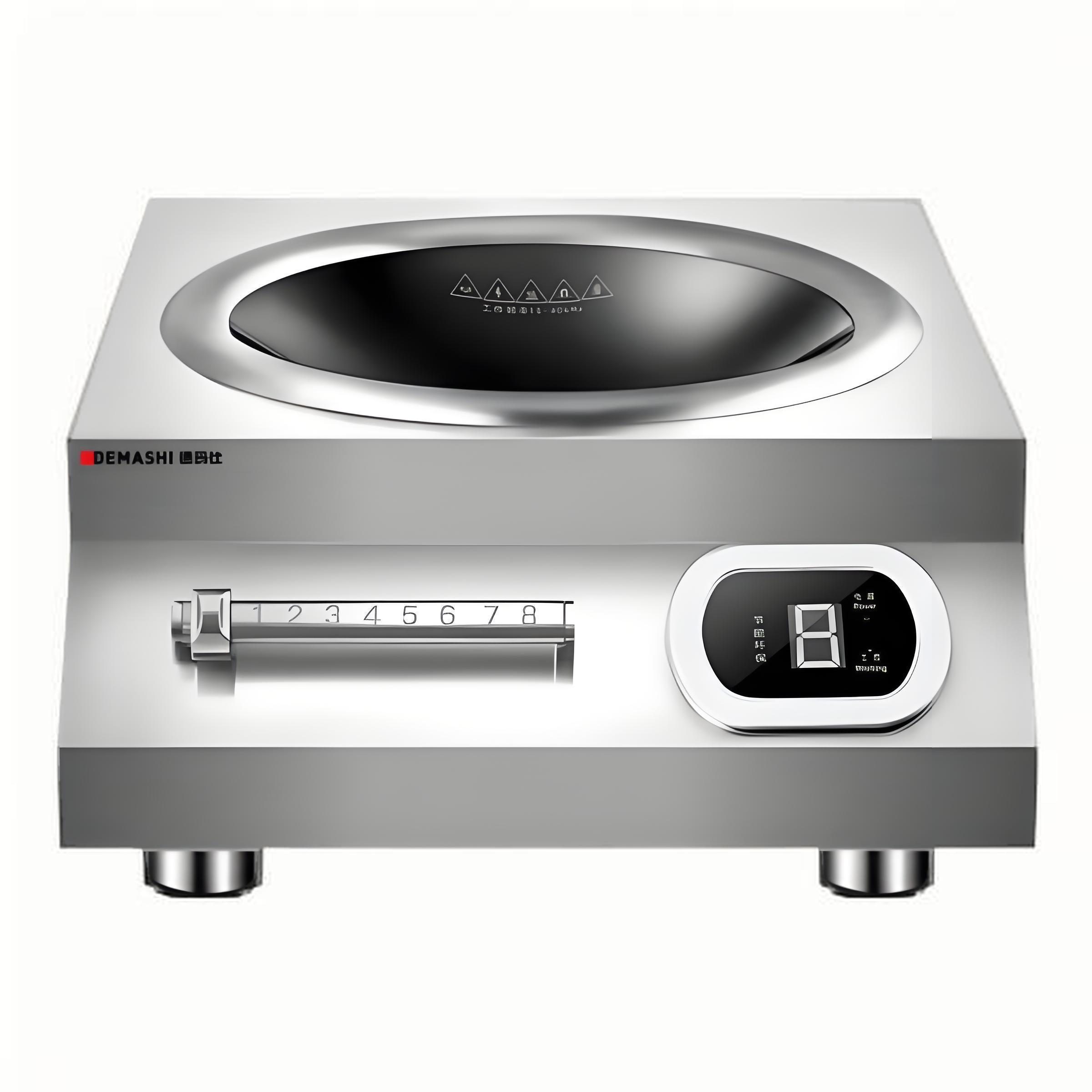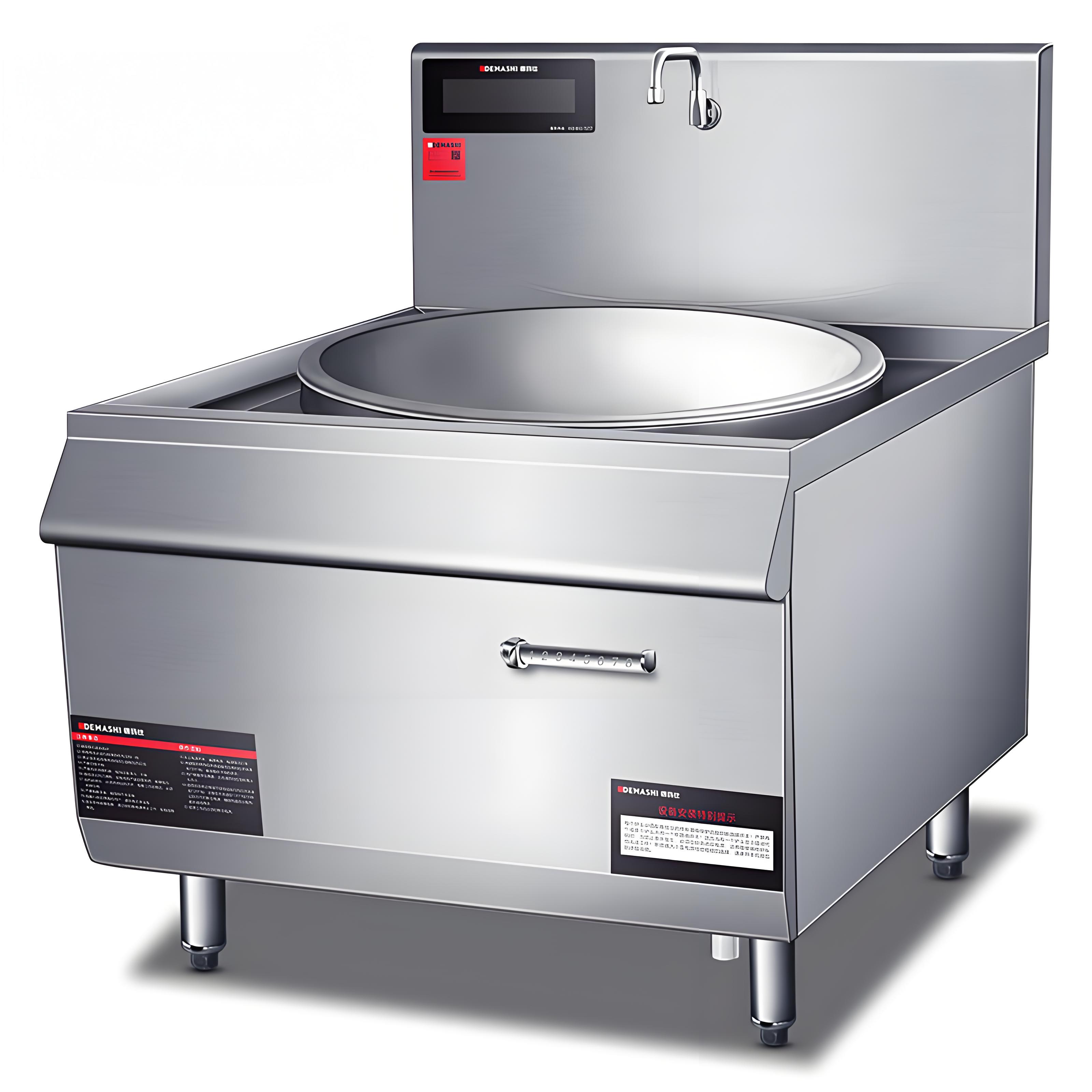Having been deeply involved in the catering industry for many years, from small street-side eateries to the kitchen equipment planning of fast-food chain brands, I’ve gained extensive experience. Fast-food restaurants, known for their rapid pace and high order volumes, make the selection of kitchen equipment, especially high-power induction cookers, of utmost importance. It directly impacts order fulfillment speed, food quality, and operational costs. Today, as an industry veteran, I’ll share my insights on which high-power induction cookers are suitable for fast-food restaurants.
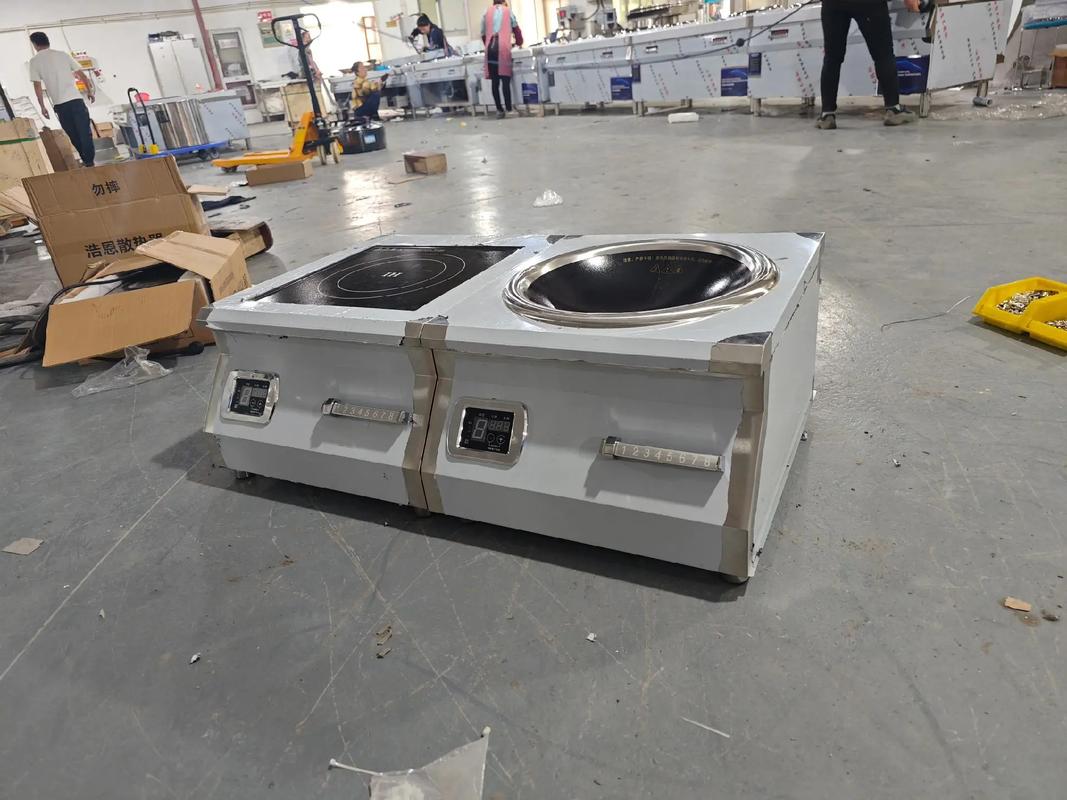
I. Characteristics of Fast-Food Restaurant Kitchens and Induction Cooker Requirements
(I) Characteristics of Fast-Food Restaurant Kitchens
Fast-food restaurants are all about speed. Customers expect their orders to be prepared and served as quickly as possible. This requires the kitchen to be able to cook a large number of dishes in a short time. Moreover, the dishes in fast-food restaurants are usually standardized, such as burgers, fried chicken, fried rice, and fried noodles. The cooking processes are relatively fixed, and there are high requirements for heat control and heating speed.
In addition, the kitchen space in fast-food restaurants is generally compact, and every inch needs to be planned carefully. The layout of equipment should facilitate operations and also consider maintenance and cleaning.
(II) Requirements for Induction Cookers
Based on the characteristics of fast-food restaurant kitchens, the requirements for high-power induction cookers mainly include the following aspects:
High Power: They should be able to heat ingredients quickly, reducing cooking time and improving order fulfillment speed. For example, when frying fried rice, if the induction cooker doesn’t have enough power, the heating will be slow, affecting the taste and the speed of order fulfillment.
Good Stability: They should not malfunction or experience performance degradation during long-term high-load operation. A fast-food restaurant may serve hundreds or even thousands of customers a day. Any breakdown of the induction cooker will seriously affect normal business operations.
Simple Operation: Fast-food restaurant kitchens often have a relatively high turnover of staff, and new employees need to get up to speed quickly. Therefore, the operation interface of the induction cooker should be simple and easy to understand, with intuitive function settings.
Easy to Clean: The kitchen environment is greasy, and the surface of the induction cooker is prone to getting stained with oil. If it’s not easy to clean, it will not only affect the appearance but may also breed bacteria.
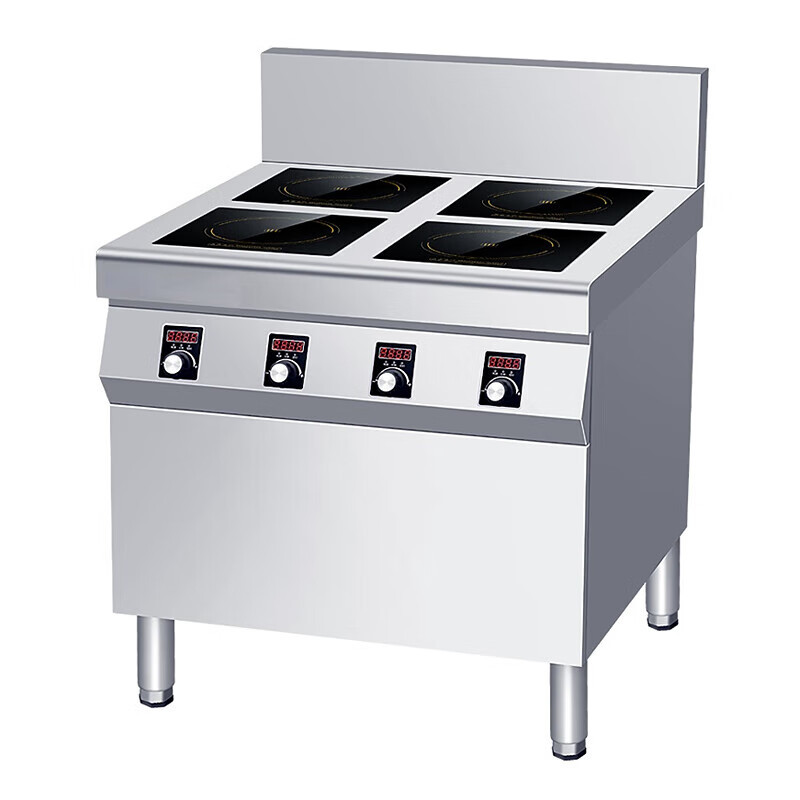
II. Types and Characteristics of High-Power Induction Cookers
Currently, there are various types of high-power induction cookers on the market, including tabletop induction cookers, built-in induction cookers, concave induction cookers, and flat induction cookers. Below, I’ll elaborate on their respective characteristics.
(I) Tabletop Induction Cookers
Characteristics:
Portable: Tabletop induction cookers do not require fixed installation and can be moved around according to the kitchen layout and actual needs. For example, during peak hours, multiple tabletop induction cookers can be placed together to increase the cooking area; during off-peak hours, they can be moved aside to free up space.
Relatively Low Price: Compared to built-in induction cookers, the manufacturing cost of tabletop induction cookers is lower, so their prices are more affordable. For some small fast-food restaurants with limited budgets, they are a good choice.
Easy Installation: They only need to be connected to a power source to be used, without a complicated installation process.
Suitable Scenarios:
They are suitable for temporary fast-food stalls, small fast-food restaurants, or fast-food kitchens with large spaces that require flexible adjustment of equipment positions.
(II) Built-in Induction Cookers
Characteristics:
Aesthetic and Elegant: Built-in induction cookers can be embedded into the kitchen countertop, blending in with the overall kitchen style and making the kitchen look more tidy and elegant.
Space-Saving: They do not occupy additional floor space in the kitchen, allowing for a more reasonable layout.
Good Stability: Since they are fixedly installed, there will be no shaking during use, ensuring high stability.
Suitable Scenarios:
They are suitable for medium to large fast-food restaurants that have high requirements for kitchen decoration and pursue an overall aesthetic, such as fast-food chain brands.
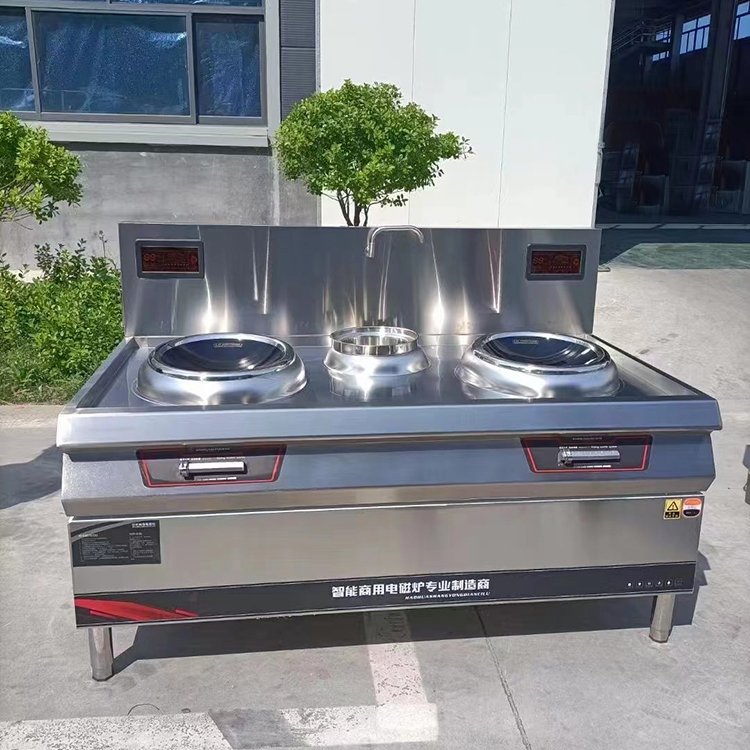
(III) Concave Induction Cookers
Characteristics:
Excellent Heat Concentration: The concave design allows for a larger contact area between the pot and the induction cooker, concentrating the heat and enabling faster heating. They are particularly suitable for high-temperature and rapid cooking methods such as frying, stir-frying, and deep-frying.
Wide Range of Suitable Pots: They can accommodate various shapes of pots, such as round-bottomed and flat-bottomed pots.
Suitable Scenarios:
They are suitable for kitchen areas in fast-food restaurants that require a lot of stir-frying operations, such as the stir-frying section.
(IV) Flat Induction Cookers
Characteristics:
Uniform Heating: The flat heating area of flat induction cookers ensures that the bottom of the pot is heated evenly, avoiding local overheating or underheating. They are suitable for cooking methods that require uniform heating, such as boiling, stewing, and braising.
Easy to Clean: The flat surface has no grooves or gaps, making it easy to clean.
Suitable Scenarios:
They are suitable for areas in fast-food restaurants where operations such as boiling noodles or making soup are carried out.
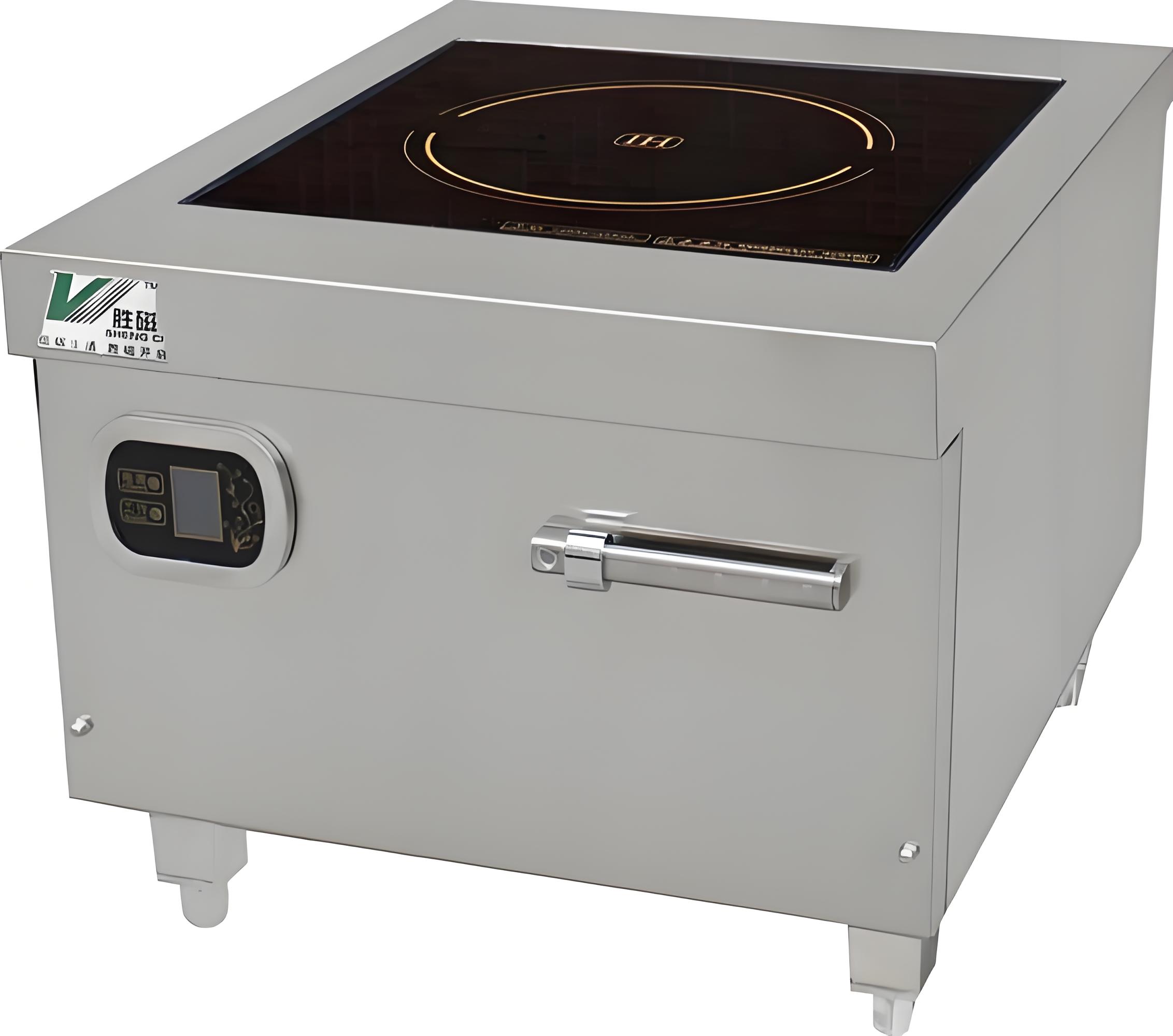
III. Analysis of Key Parameters of High-Power Induction Cookers for Fast-Food Restaurants
When choosing a high-power induction cooker, there are several key parameters that we need to pay close attention to, as they directly affect the performance and usage effect of the induction cooker.
(I) Power
Power is an important indicator for measuring the heating capacity of an induction cooker. Generally, high-power induction cookers used in fast-food restaurants have a power range of 3kW – 15kW. The higher the power, the faster the heating speed, but it also consumes more electricity.
Suitable Scenarios for Different Power Levels:
3kW – 5kW: Suitable for operations such as boiling noodles or making soup, where the heating speed requirement is not particularly high.
5kW – 10kW: Can meet general stir-frying needs and can quickly heat ingredients. They are suitable for small to medium fast-food restaurants.
10kW – 15kW: Have a very fast heating speed and are suitable for large fast-food restaurants or scenarios that require a large number of rapid order fulfillments, such as the stir-frying section during peak hours.
(II) Energy Efficiency Rating
The energy efficiency rating reflects the energy utilization efficiency of an induction cooker. A higher energy efficiency rating means that the induction cooker has less energy loss when converting electricity into heat and is more energy-saving.
Currently, the energy efficiency ratings of induction cookers on the market are generally divided into Level 1, Level 2, Level 3, etc., with Level 1 being the highest and Level 3 being the lowest. For fast-food restaurants, choosing an induction cooker with a high energy efficiency rating can reduce operational costs, which is very cost-effective in the long run.
(III) Coil Material and Quantity
The coil is one of the core components of an induction cooker, and its material and quantity directly affect the heating effect.
Coil Material:
Common coil materials include copper and aluminum. Copper coils have better electrical conductivity and higher heating efficiency, but their cost is also relatively high. Aluminum coils have a lower cost, but their electrical conductivity and heating efficiency are slightly inferior to those of copper coils.
Coil Quantity:
The more coils there are, the larger the heating area and the more uniform the heating. Generally, high-power induction cookers use a combination of multiple coils to improve the heating effect.
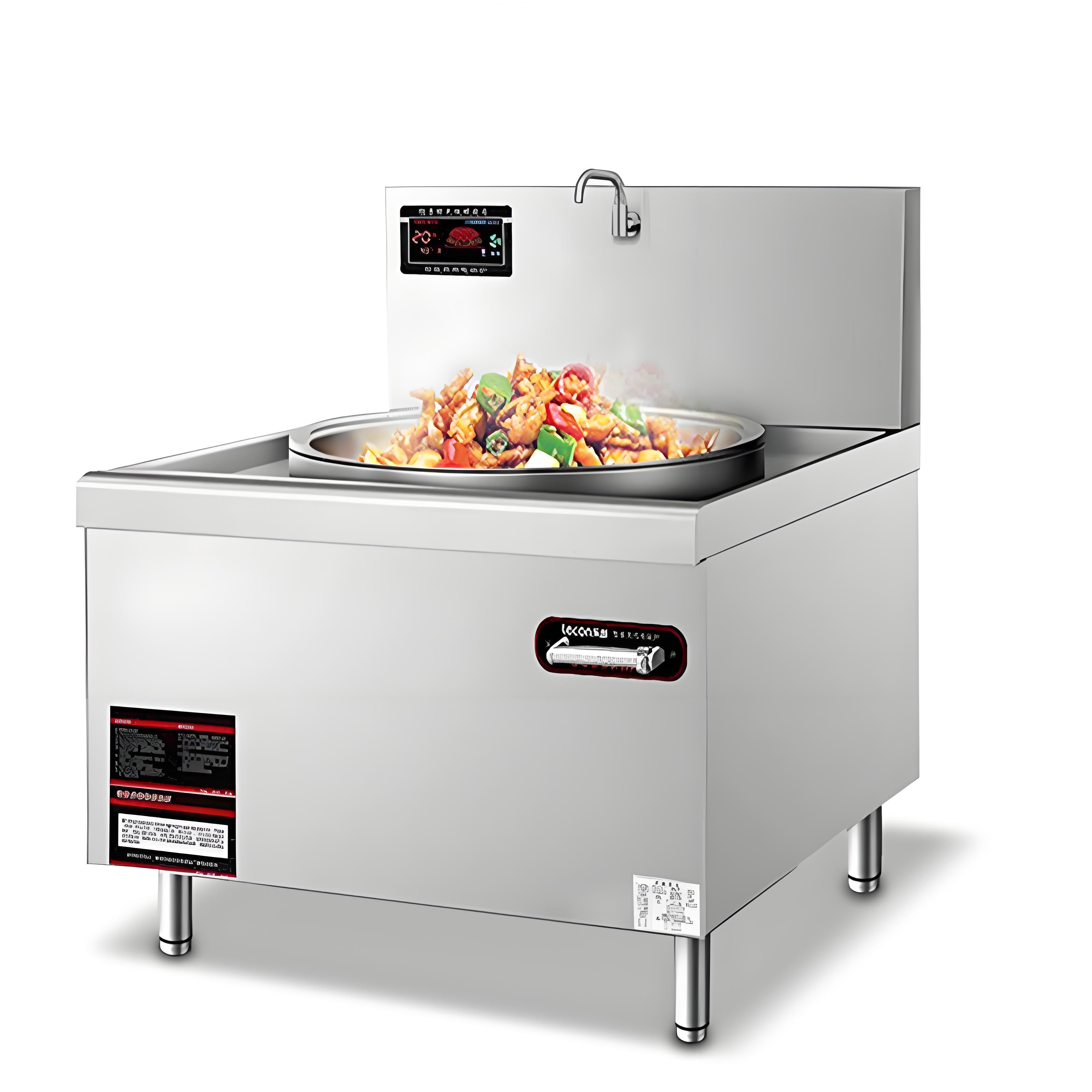
(IV) Safety Protection Functions
The kitchen environment in fast-food restaurants is complex, with various safety hazards. Therefore, the safety protection functions of induction cookers are very important.
Common safety protection functions include:
Overheating Protection: Automatically stops heating when the induction cooker temperature is too high to prevent accidents such as fires.
Leakage Protection: Quickly cuts off the power supply in case of leakage to ensure personnel safety.
Dry Burning Protection: Automatically stops heating when the pot is removed from the induction cooker surface or no pot is placed on it to prevent dry burning from damaging the induction cooker.
IV. Brand Recommendations for High-Power Induction Cookers for Fast-Food Restaurants
There are numerous brands of high-power induction cookers on the market, with varying qualities. Below, I’ll recommend several brands that have a good reputation and reliable quality in the fast-food restaurant field.
(I) Midea
Midea is a well-known home appliance brand in China, and its high-power induction cookers have a high reputation and popularity in the market.
Product Characteristics:
Wide Power Range: Midea’s high-power induction cookers have a power range from 3kW to 15kW, which can meet the needs of fast-food restaurants of different sizes.
High Energy Efficiency Rating: Many of its products have reached the Level 1 energy efficiency standard, with significant energy-saving effects.
Good Safety Performance: Equipped with multiple safety protection functions such as overheating protection, leakage protection, and dry burning protection, providing a more secure user experience.
Perfect After-Sales Service: It has after-sales service outlets all over the country and can provide timely maintenance and repair services for users.
Suitable Fast-Food Restaurant Types:
They are suitable for various fast-food restaurants, especially fast-food chain brands that have high requirements for brand and quality.

(II) Supor
Supor is also a well-known brand in the home appliance industry, and its high-power induction cookers are favored by consumers for their high quality and good performance.
Product Characteristics:
Fast Heating Speed: It adopts advanced heating technology and can quickly heat ingredients to the desired temperature, improving order fulfillment speed.
Simple Operation: The operation interface is designed to be simple and easy to understand, allowing chefs to get started quickly.
Aesthetic Appearance Design: The built-in induction cookers have a fashionable and elegant appearance design that can match various kitchen decoration styles.
Suitable Fast-Food Restaurant Types:
They are suitable for medium to large fast-food restaurants, especially those that pay attention to kitchen aesthetics and operational convenience.
(III) Banqiu
Banqiu is a brand that focuses on the kitchen appliance field, and its high-power induction cookers are known for their high cost-effectiveness.
Product Characteristics:
Affordable Price: Compared with some big brands, Banqiu’s high-power induction cookers have a more affordable price, which is suitable for fast-food restaurants with limited budgets.
Reliable Quality: Although the price is not high, the product quality is guaranteed and can meet the daily usage needs of fast-food restaurants.
Practical Functions: It has basic functions such as heating and timing, which can meet the basic cooking needs of fast-food restaurants.
Suitable Fast-Food Restaurant Types:
They are suitable for small fast-food restaurants, fast-food stalls, and other places that are more sensitive to prices.
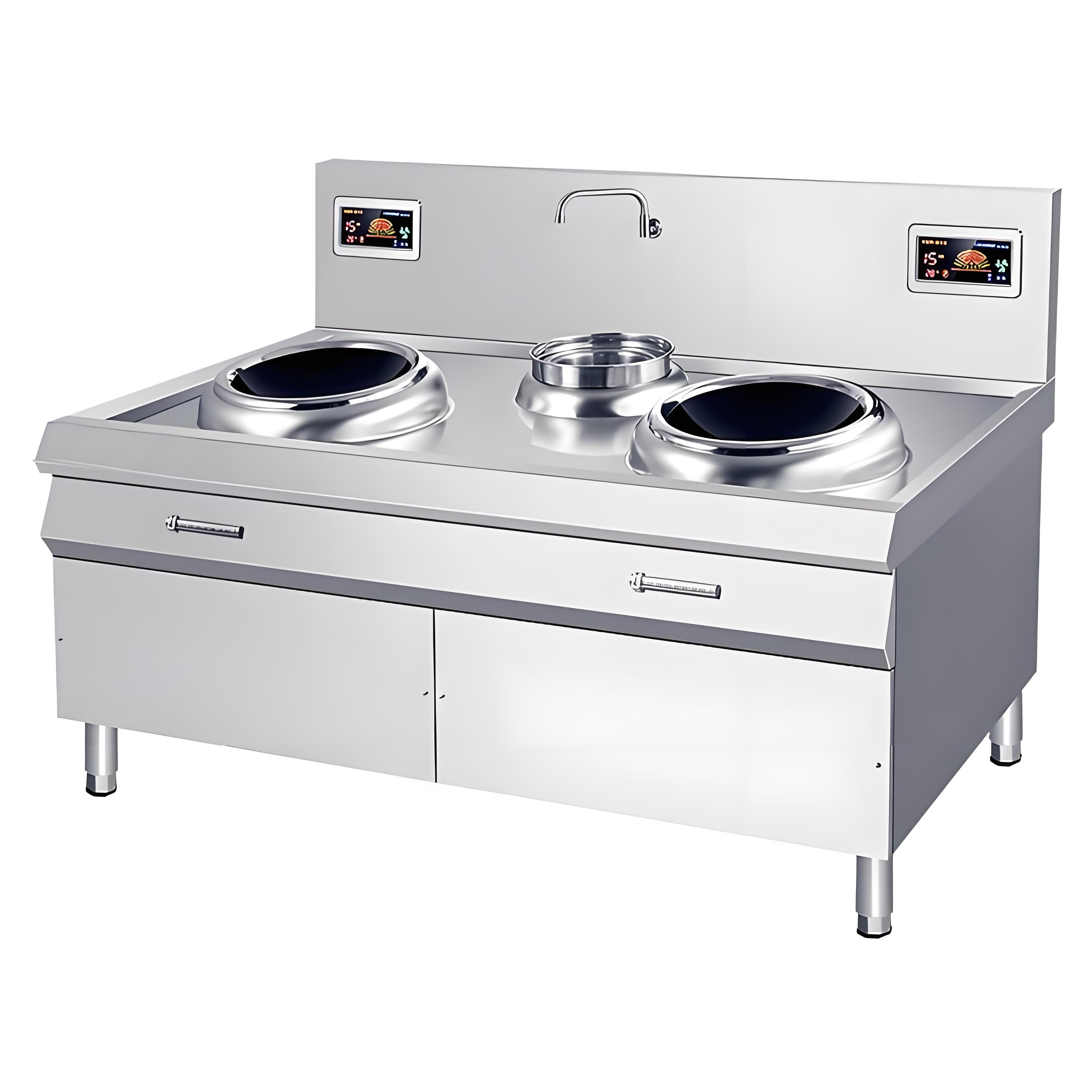
V. Purchase Suggestions for High-Power Induction Cookers for Fast-Food Restaurants
After understanding the needs of fast-food restaurants for induction cookers, the types and key parameters of induction cookers, as well as brand recommendations, below I’ll give you some specific purchase suggestions.
(I) Choose Power Based on Kitchen Size and Order Volume
When purchasing an induction cooker, the first consideration should be the size of the kitchen and the order volume. If the fast-food restaurant is small and the order volume is not high, you can choose an induction cooker with a power of 3kW – 5kW. If the fast-food restaurant is large and the order volume is high, especially if a lot of stir-frying operations are required, it is recommended to choose an induction cooker with a power of 10kW – 15kW.
(II) Pay Attention to Energy Efficiency Rating and Energy-Saving Effects
Induction cookers with a high energy efficiency rating may have a relatively higher purchase cost, but they can save a lot of electricity costs in the long run. Therefore, when purchasing, try to choose products with a high energy efficiency rating.
(III) Consider Safety Protection Functions
The kitchen environment in fast-food restaurants is complex, and safety is of utmost importance. When purchasing an induction cooker, ensure that the product has multiple safety protection functions such as overheating protection, leakage protection, and dry burning protection to safeguard personnel and equipment safety.
(IV) Select the Type Based on Kitchen Decoration Style
If the fast-food restaurant has high requirements for kitchen decoration and pursues an overall aesthetic, you can choose a built-in induction cooker. If the kitchen space is large and requires flexible adjustment of equipment positions, or if the budget is limited, you can choose a tabletop induction cooker.
(V) Refer to Brand Reputation and After-Sales Service
Choosing products from well-known brands can provide better quality and after-sales service guarantees. You can learn about the reputation and after-sales service situations of different brands by checking user reviews and consulting peers.
VI. Usage and Maintenance of High-Power Induction Cookers for Fast-Food Restaurants
After selecting a suitable high-power induction cooker, it is also important to pay attention to the correct usage and maintenance methods to extend the service life of the induction cooker and ensure its stable performance.

(I) Usage Precautions
Use Suitable Pots: Choose pots that match the induction cooker. Generally, the bottom diameter of the pot should be more than 80% of the heating area of the induction cooker, and the material should have good magnetic conductivity, such as iron pots and stainless steel pots.
Avoid Dry Burning: During use, ensure that the pot is always placed on the induction cooker surface to avoid dry burning, which can damage the induction cooker.
Control Heating Time: Although induction cookers heat quickly, do not overheat for a long time to avoid affecting the service life of the pot and the induction cooker.
Pay Attention to Ventilation and Heat Dissipation: Induction cookers will generate a certain amount of heat during operation. Ensure that the kitchen is well-ventilated to avoid damage to the induction cooker due to overheating.
(II) Maintenance Methods
Regular Cleaning: After each day’s use, wipe the surface of the induction cooker with a damp cloth to remove oil stains and food residues. If there are stubborn stains on the surface, you can use a neutral cleaner for cleaning, but be careful to avoid water getting into the induction cooker.
Check Power Cords and Plugs: Regularly check the power cords and plugs for damage, aging, etc. If any problems are found, replace them in a timely manner.
Regular Coil Maintenance: You can regularly invite professionals to inspect and maintain the coils of the induction cooker to ensure their stable performance.
VII. Related Q&A
(I) Q: What is the difference between high-power induction cookers for fast-food restaurants and household induction cookers?
A: There are several main differences between high-power induction cookers for fast-food restaurants and household induction cookers:
Power: High-power induction cookers for fast-food restaurants generally have a power range of 3kW – 15kW, while household induction cookers usually have a power of around 2kW. Fast-food restaurant induction cookers have higher power to meet the needs of large-volume and rapid order fulfillments.
Durability: Fast-food restaurant induction cookers need to operate under high loads for long periods, so they have higher requirements for durability. Their internal components and housing materials are more sturdy and durable, while household induction cookers have relatively lower usage frequency and durability requirements.
Functions: Fast-food restaurant induction cookers focus more on practicality and efficiency in functions, such as rapid heating and timing functions. Household induction cookers have more diverse functions. In addition to basic cooking functions, they may also have some special features, such as hot pot and grilling functions.
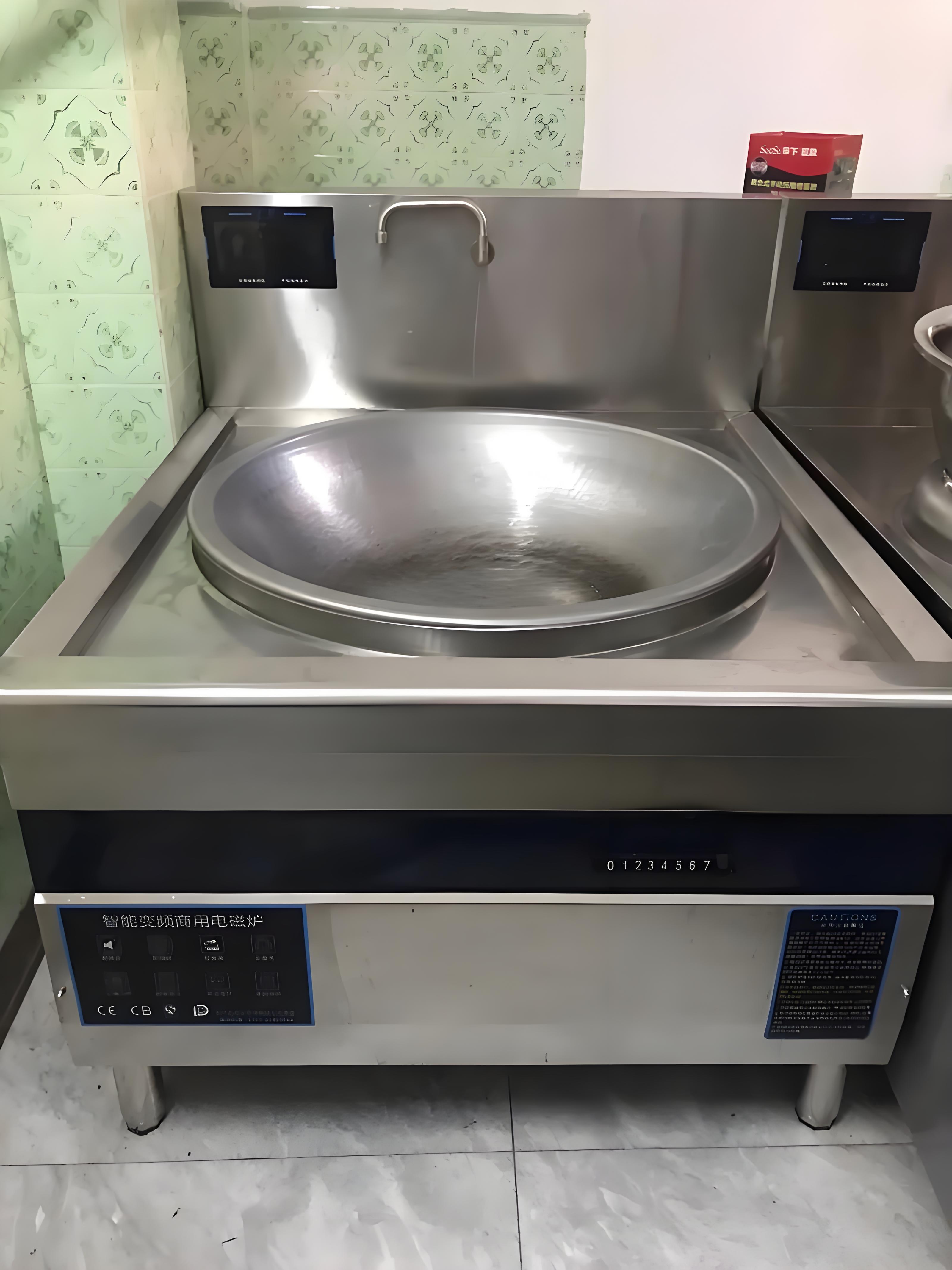
(II) Q: What should I do if a high-power induction cooker in a fast-food restaurant malfunctions during use?
A: If a high-power induction cooker in a fast-food restaurant malfunctions during use, you can follow these steps:
Stop Using It Immediately: For safety reasons, stop using the induction cooker immediately and cut off the power supply once a malfunction is detected.
Check the Malfunction Phenomenon: Carefully observe the malfunction phenomenon of the induction cooker, such as whether there are abnormal sounds, odors, or whether the indicator lights are normal, so as to accurately describe the problem to the maintenance personnel.
Contact After-Sales Service: If it is a branded induction cooker, you can call the brand’s after-sales service hotline, explain the malfunction situation to the maintenance personnel, and follow their guidance for handling. If the induction cooker is still within the warranty period, you can enjoy free repair services.
Invite Professional Personnel for Repair: Do not disassemble the induction cooker for repair by yourself to avoid causing further damage or safety hazards. Invite professional maintenance personnel for repair.
(III) Q: What is the general service life of a high-power induction cooker in a fast-food restaurant?
A: The service life of a high-power induction cooker in a fast-food restaurant is affected by multiple factors, such as usage frequency, usage environment, and maintenance and care. Generally, under normal use and regular maintenance, the service life of a high-power induction cooker in a fast-food restaurant can reach 5 – 8 years. However, if it is used improperly or lacks maintenance and care, the service life may be shortened.
(IV) Q: Is the energy consumption of high-power induction cookers in fast-food restaurants high?
A: The energy consumption of high-power induction cookers in fast-food restaurants is relatively high because of their high power. However, compared with traditional gas stoves, induction cookers have higher energy utilization efficiency and can reduce energy waste. Moreover, choosing an induction cooker with a high energy efficiency rating can further reduce energy consumption to a certain extent. In addition, reasonable usage methods, such as avoiding dry burning and controlling heating time, can also reduce the energy consumption of the induction cooker.
(V) Q: Can multiple pots be used simultaneously on a high-power induction cooker in a fast-food restaurant?
A: This depends on the design and power of the induction cooker. Some high-power induction cookers are designed with multiple heating areas and can be used with multiple pots simultaneously. However, it should be noted that using multiple pots simultaneously will increase the load on the induction cooker. Ensure that the induction cooker has sufficient power and pay attention to observing its working status during use to avoid overheating and other situations.
I hope that through today’s sharing, I can help you avoid detours in the selection and use of high-power induction cookers for fast-food restaurants, making the kitchens of fast-food restaurants more efficient, safe, and energy-saving.
